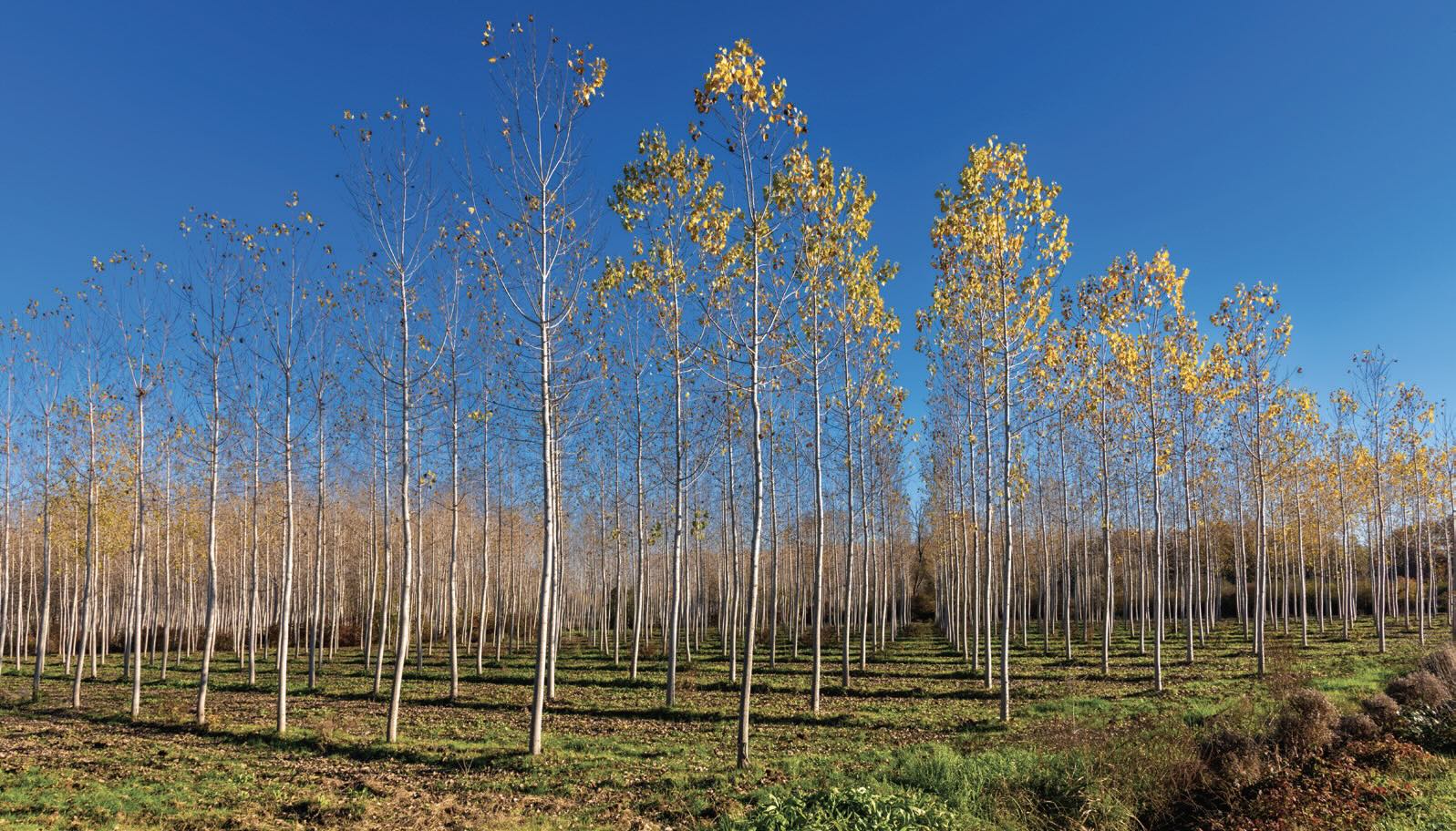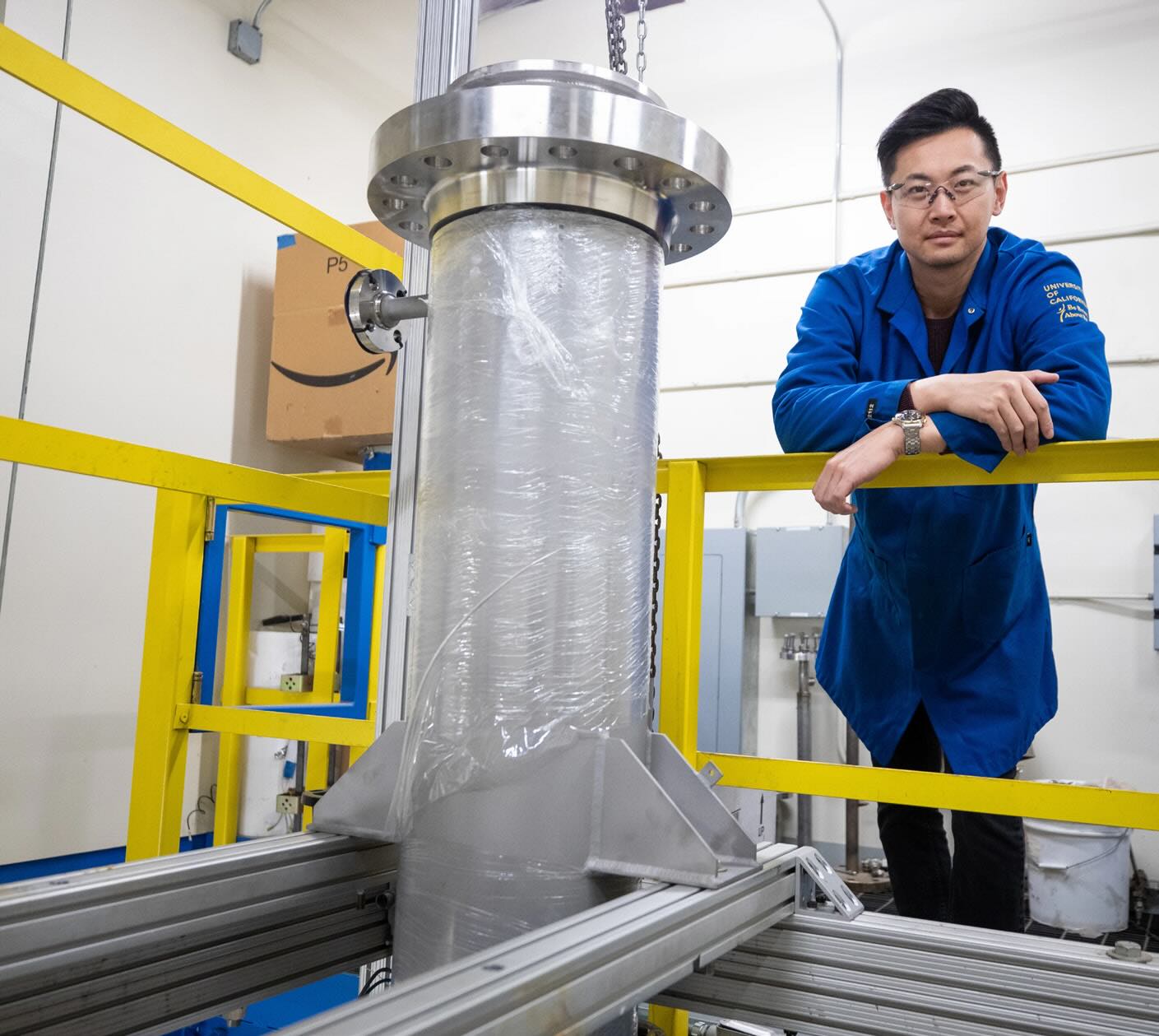HIGHLIGHTS
•
A new approach has been developed for operating a biorefinery that can achieve both a lower cost of fuel production and a lower carbon footprint.
•
Treatment of the raw material, biomass, using CELF under mild conditions allows for the complete utilization of hemicellulose, cellulose and lignin.
•
This high yield is realized through the use of THF as a co-solvent of water, which facilitates the solvation of cellulose and lignin.
The growing awareness that the use of naturally derived raw materials must increase for reasons of sustainability is leading to determining how to optimize the use of readily available biomass. Initial efforts involved using crops such as corn and soybean that also are needed for food. Competition for these edible vegetables has only increased cost and strained supply.
For this reason, much attention is being paid to identify and process biobased raw materials that are not linked to the food supply. A past TLT article
1 discussed work conducted to evaluate the potential for using the non-edible crop known as energy cane. This material has a similar composition to sugar cane but contains a much higher level of cellulosic fibers than sucrose. It also can be readily grown in colder climates using lower levels of fertilizer and water. A process that consists of hydrothermal pretreatment followed by disk milling was utilized to isolate sugars from the biomass. Fermentation was then conducted to isolate vegetable oils and ethanol.
The challenge in optimizing the processing of any type of cellulosic material is to efficiently break down the biomass into useful intermediates. Charles Cai, associate research professor in the department of chemical and environmental engineering at the University of California, Riverside in Riverside, Calif., says, “Efforts to produce functional biobased products including biofuels are not new. Work has been underway for over 100 years in this area. For example, the Ford Model T originally produced in 1908 could run on ethanol as its fuel.”
The traditional way to take biomass and convert it through biorefining into biofuels and other useful derivatives is to target the carbohydrate or holocellulose fraction through aqueous pretreatment followed by enzymatic treatment to release the sugars for fermentation into ethanol. Unfortunately, this approach ignores the potential of extracting and utilizing the lignin found in biomass. Admittedly, lignin is a very stable structural material for plants, and finding pathways to efficiently transform it into useful derivatives has been challenging.
While lignin is usually burnt for fuel to provide low-carbon process heating, the detrimental effects in a biorefinery may include an increase in particulate emissions and an overall reduction in profitability. Cai says, “A better strategy for operating a biorefinery is to develop process steps that can achieve both a lower carbon footprint and a lower cost of fuel production. This approach requires developing biomass processes that can efficiently isolate and convert lignin into useful co-products.”
Cai and his colleague have now developed such an approach that meets these objectives using biomass and avoiding the need to purchase carbon credits to meet carbon neutrality guidelines.
CELF pretreatment
Processing of biomass is initiated through the use of a pretreatment step developed by the researchers, which is known as co-solvent enhanced lignocellulosic fractionation (CELF). Cai says, “Treatment of biomass using the CELF approach under mild conditions allows for the complete utilization of hemicellulose, cellulose and lignin, which are the three key components present in all naturally derived biomass feedstocks.”
The high yield obtained by the CELF approach is due to the use of the widely available solvent, tetrahydrofuran (THF). Cai says, “We found that THF can undergo a unique phase behavior with water that facilitates the solvation of cellulose and lignin. Adding THF to water as a co-solvent at mild temperatures leads to the spontaneous unzipping of cellulose strands and the unraveling of lignin globules from biomass. Great flexibility is achieved by using this approach in breaking down both a hydrophilic material, cellulose, and a hydrophobic material, lignin, to useful derivatives.”
To push CELF to completion, dilute acid is added as a catalyst. Cai adds, “We are able to cut energy consumption by 50%, which stands in contrast to other biorefining processes such as pyrolysis that, while effective, require significant energy and also generate high levels of carbon dioxide emissions.”
“THF also can be recycled easily due to its low boiling point of 66 °C compared to 100 °C for water. Since CELF is still an aqueous process, THF does not have to be recovered and used in its dry form, thus saving energy costs and improving operational safety,” says Cai.
Further processing can lead to converting cellulose to either ethanol or isobutanol, lignin to cycloalkanes and sugars (for example, pentose) derived from hemicellulose to intermediates as isobutyl acetate and adipic acid. Cai says, “Cycloalkanes produced from lignin are key components of sustainable aviation fuel (SAF). Adipic acid is used in the manufacture of diesters, a synthetic lubricant base stock.”
The researchers developed a high fidelity CELF biorefinery model to evaluate the feasibility of such an approach on a commercial scale. Corn stover and poplar wood
(see Figure 1) were selected as the sources of biomass. Cai says, “The model suggests that feedstocks that are more dense in carbon content, such a hardwood poplar, will result in better biorefinery economics and lower carbon footprint or global warming potential.”
 Figure 1. One of the sources of biomass used in evaluating a new approach for operating a biorefinery originates from poplar wood. Figure courtesy of the University of California, Riverside.
Figure 1. One of the sources of biomass used in evaluating a new approach for operating a biorefinery originates from poplar wood. Figure courtesy of the University of California, Riverside.
The outcome from the modeling is that the economics of the biorefinery are competitive with current market conditions. SAF can be produced at a break-even price as low as $3.15 per gallon of gasoline equivalent. The current average cost for a gallon of jet fuel in the U.S. is $5.96.
Cai indicates that the next step is to scale up the process. He says, “To test robustness of scaling the technology, we performed a 750X scale-up of the CELF pretreatment and obtained a product mix that demonstrated less than a 5% variation with what was obtained at lab-scale. Future work, that is funded by the U.S. Department of Energy, will involve scale-up of a fully integrated system to produce aviation and marine fuels, and running it continuously
(see Figure 2).”
 Figure 2. A reactor that will be used in scaling up the CELF process will help determine the feasibility of commercializing this technology. Figure courtesy of the University of California, Riverside.
Figure 2. A reactor that will be used in scaling up the CELF process will help determine the feasibility of commercializing this technology. Figure courtesy of the University of California, Riverside.
Cai concludes, “The key takeaway is this new biorefinery concept can produce carbon neutral biofuels while still being economically viable. This work is important in demonstrating that a viable 2nd generation biofuels process can be built around a key pretreatment technology that better extracts and utilizes lignin.”
Additional information can be found in a recent article
2 or by contacting Cai at
ccai@engr.ucr.edu.
REFERENCES
1.
Canter, N. (2021), “Energy cane: More cost effective and sustainable biodiesel option,” TLT,
77 (10), pp 16-17. Available
here.
2.
Klein, B., Scheidemantle, B., Hanes, R., Bartling, A., Grundt, N., Clark, R., Biddy, M., Tao, L., Trinh ,C., Guss, A., Wyman, C., Ragauskas, A., Webb, E., Davison, B. and Cai, C. (2024), “Economics and global warming potential of a commercial-scale delignifying biorefinery based on co-solvent enhanced lignocellulosic fractionation to produce alcohols, sustainable aviation fuels, and co-products from biomass,”
Energy & Environmental Science, 17 (3), pp. 1202-1215.